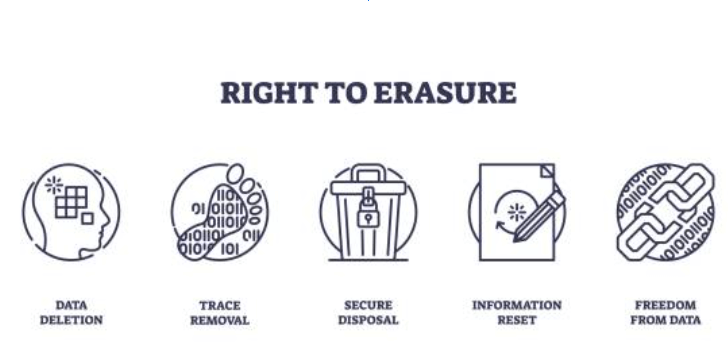
Erasure of Culture: How Heritage Is Silently Disappearing
Have you ever walked through a city and felt like something was… missing? Like a story that used to be there has been wiped away, leaving only silence in its place? That’s the quiet tragedy of the erasure of culture—when languages fade, traditions are forgotten, and entire histories vanish, often without most of us realizing it. This subtle, almost invisible disappearance is called erasure, and it’s happening all around us.
From ancient languages being lost to younger generations, to monuments being torn down or ignored, cultural erasure is one of the most pressing and under-discussed issues of our time. But what is erasure, and why does it matter so much to the future of our world?
Let’s unpack it.
What Is Cultural Erasure?
Cultural erasure refers to the gradual or intentional disappearance of cultural identities, languages, customs, beliefs, and historical narratives. It can happen in obvious ways—like banning a native language—or in subtle ways, like failing to teach certain histories in school.
Sometimes, erasure is caused by colonialism or war. Other times, it’s driven by globalization, urban development, or simply the desire to assimilate into a dominant culture. But no matter how it happens, the result is the same: we lose valuable parts of human heritage forever.
Real-Life Examples
Indigenous languages: Over 40% of the world’s 7,000 languages are at risk of disappearing. When a language dies, so does the unique way its speakers see the world.
Urban redevelopment: Cities often replace culturally significant neighborhoods with modern buildings, pushing out long-standing communities.
Media representation: Cultural stories are often whitewashed or erased altogether in mainstream media, leaving certain groups invisible.
See also: Understanding Depression and Anxiety: Key Symptoms and the Best Apps for Support
Why Is Cultural Erasure So Dangerous?
Cultural erasure doesn’t just delete the past—it reshapes the future. When entire communities lose touch with their traditions, they lose their identity, sense of belonging, and even mental well-being. Studies have shown that communities with strong cultural ties experience lower rates of depression, higher self-esteem, and better education outcomes.
Additionally, when cultures are erased, the world becomes more homogenized. We lose diversity in music, food, art, language, and philosophy. Imagine a world where every street looks the same, every song sounds the same, and every story is told by the same voice. That’s the bleak reality of unchecked erasure.
How Is Culture Silently Disappearing?
It’s not always dramatic or violent. The most dangerous kind of cultural erasure happens quietly. Here’s how:
1. Language Loss
When younger generations stop learning their ancestral languages, those languages die with their grandparents. Government policies that favor dominant languages over indigenous ones often accelerate this.
2. Gentrification
Neighborhoods that once thrived with cultural traditions are often “revitalized,” which is just a nicer way of saying they’re being replaced. Long-time residents get pushed out, and their cultural footprint vanishes with them.
3. Curriculum Choices
Many school systems overlook or completely ignore the histories of marginalized communities. If a culture’s story isn’t taught, it’s forgotten.
4. Censorship and Political Erasure
In some countries, governments erase culture by banning certain religious practices, holidays, or clothing styles. This forces communities to choose between survival and self-expression.
What Can We Do to Stop Erasure?
Good news: we can take action to preserve culture before it’s too late.
1. Support Local and Indigenous Artists
They’re often the last storytellers of their cultures. Buy their work, share their stories, and learn from them.
2. Learn the History That’s Not in Textbooks
Explore oral histories, local museums, and books written by members of underrepresented communities. Challenge the single-story narrative.
3. Teach and Speak Native Languages
If you have roots in a language that’s fading, learn it. Teach it to your children. Languages are living history.
4. Protect Cultural Spaces
Get involved in efforts to preserve historic neighborhoods and cultural centers. Push back against erasure disguised as “progress.”
5. Use Your Voice
Call out cultural appropriation, challenge media bias, and advocate for more inclusive storytelling.
FAQs About Cultural Erasure
Q1: What is erasure in simple terms?
A: Erasure is the removal, omission, or loss of something important—like a culture, identity, or language—often in ways that go unnoticed until it’s too late.
Q2: Is erasure always intentional?
A: Not always. Sometimes it’s the result of policies or trends that seem neutral on the surface but have harmful long-term effects on marginalized communities.
Q3: How is cultural erasure different from cultural appropriation?
A: Cultural erasure is about removing a culture’s visibility and value, while cultural appropriation is about using a culture—often without permission or understanding—especially for profit or trendiness.
Q4: Can cultures that have been erased be revived?
A: Yes, but it takes dedicated effort. Some languages and traditions have been successfully revived through education, activism, and community resilience.
Q5: How does erasure affect future generations?
A: It can sever people from their roots, reduce cultural diversity, and lead to a loss of identity and belonging for future generations.
Conclusion: Remembering What Matters
The erasure of culture is not just about the past—it’s about the future we’re shaping. Every language lost, every tradition forgotten, every community displaced chips away at the mosaic of human identity. But this doesn’t have to be the ending.
By paying attention, honoring diverse histories, and using our platforms to uplift forgotten voices, we can help stop the silent disappearance of heritage. Because culture isn’t just what came before us—it’s who we are now, and who we’ll become next.
So the next time you hear a forgotten language, pass a rundown historic building, or read a story that doesn’t make the mainstream, pause. Listen. Remember.




